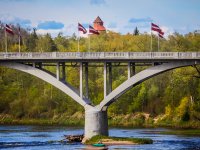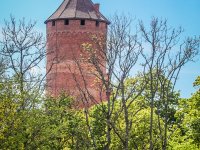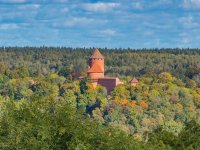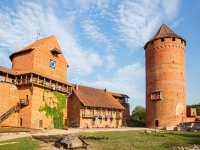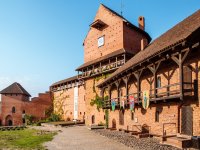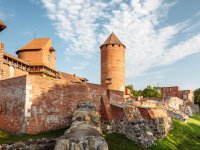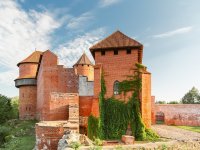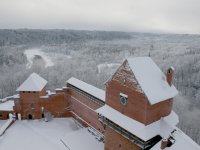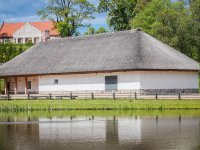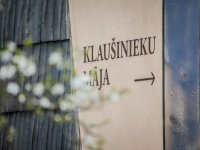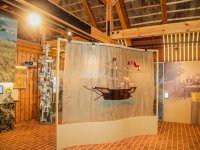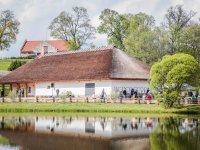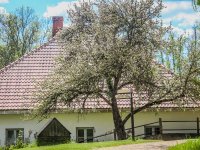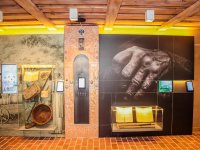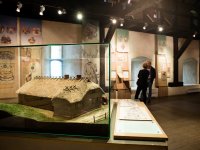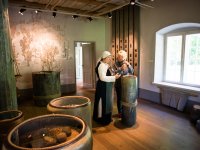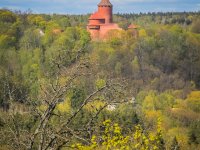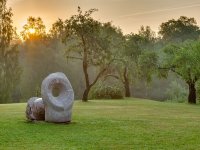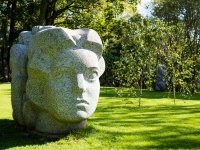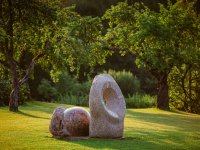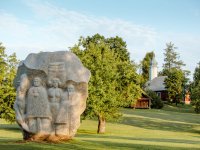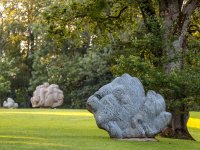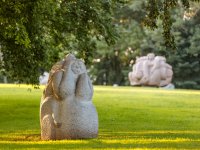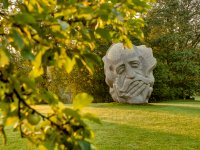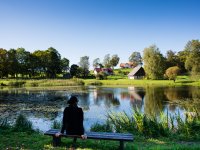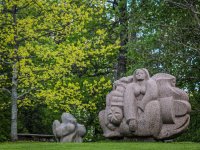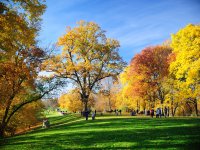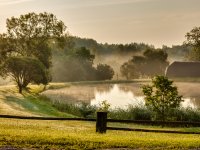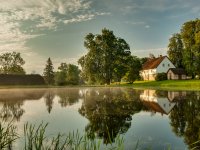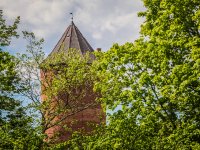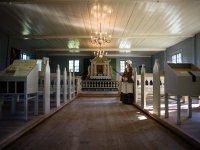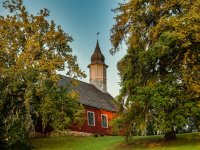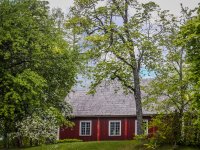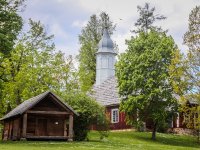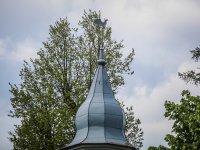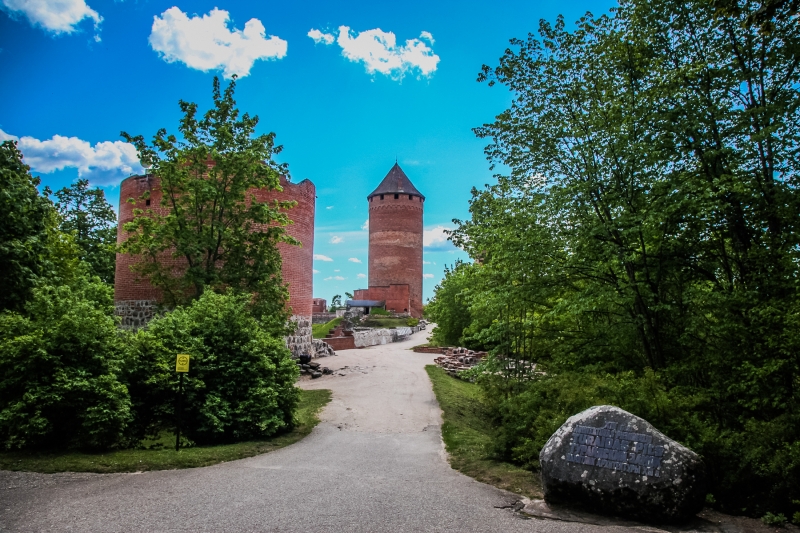
The most visited museum in Latvia, where you can get acquainted with expositions concerning archaeology, culture, and art history.
Livs, the native people of this region, referred to this place as the Garden of God! The area is comprised of 42 hectares rich with archeological, architectural, historical, and art treasures, which tell the compelling story of a thousand-year-long history. Exhibits at the museum show the people's lives and events throughout history as well as their traditions and crafts.
|
Address |
Turaidas iela 10, Sigulda |
|
Coordinates |
57.186824 24.847800 |
|
Phone |
+371 67972376 |
|
|
|
|
www |
|
|
Working |
Monday - Thursday 10:00 - 19:00 Friday - Sunday 10.00 - 20.00
01.05. - 30.09. 9.00 - 20.00 01.10. - 31.10. 9.00 - 19.00 01.11. - 28.02. 10.00 - 17.00 01.03. - 31.03. 01.04. - 30.04. 10.00 - 19.00
|
|
Price |
Summer season (03.06. – 31.10.): Adult - 6.00 EUR Retiree - 4.30 EUR Student - 3.00 EUR Pupil - 1.15 EUR Disabled person - 0.70 EUR
Prices in the parking-lot: Car – 1.50 EUR Minibus (up to 18 seats)– 3.50 EUR Coach or bus – 6.00 EUR Motorcycle - 1.00 EUR
Adult - 3.50 EUR Retiree - 2.15 EUR Student - 1.50 EUR Pupil - 0.70 EUR Disabled person - 0.30 EUR
Prices in the parking-lot: for free |
Turaida castle is the main attraction. Its massive red brick tower can be spotted from across the Gauja River at various overlook points. It was originally a wooden castle that belonged to the Liv leader Kaupo but was eventually burned to the ground during a series of endless battles. The masonry castle was erected in 1214 at the request of Bishop Albert. Initially, the new castle was named Frederland. However, this new name was never completely accepted by the local people so its duration was brief and was eventually returned to its original name of Turaida. Additional defensive structures were built and improved upon over the centuries including the construction of new outbuildings and living quarters within the castle yard. The invention of the firearm caused the demise of the castle’s strategic value. Following a fire in 1776, it was not rebuilt and gradually turned into ruins. In 1976, regular and systematic archeological work along with conservation and restoration efforts began.
The main tower is called a Bergfrid - one of the oldest structural parts of the castle which was built at the very beginning. It was used for scouting the general area and as a last resort in the event of a siege. The tower is five stories high and the observation platform is about 30 meters/ 90 feet above the ground.
The building on the west side of the defensive west wall was built in the 15th century. It is called the New Hall. After the 16th century, it was also used for grain storage. The building frame has remained mostly intact. It is a three-story building with a basement, where you will find exhibitions about Turaida's castle building history, the history of the adjacent lands, and a record of events that took place here while the castle was part of the Archdiocese of Riga. A large half-rounded tower on the west side of the castle was erected during the 15th century as part of a defense system for cannon fire. A prison was located in the basement of this tower. The original walls remain and, during the excavation, prisoner chain brackets were found in them. The tower-shaped southern structure was built during the 13th century to protect access to the castle's inner yard from the south.
The wooden church of Turaida is one of the oldest churches in Latvia. Archeological explorations indicate that there have been at least two churches on the site before this one. One of them was destroyed during the Great Northern War. The current church was built in 1750 during the time of pastor Daniel Merkel and remained relatively unchanged. During 2009-2010, renovation care was taken to duplicate the original craftsmanship and technology available during the original construction. For example, birch bark was used for insulation and the paint for the outer walls was made from a rye suspension added to ocher pigment. Today, the church looks as it did when it was built.
The construction of Turaida Manor and the castle’s defensive structures began during the Middle Ages and continued over the years. At the beginning of the 18th century, the size of the estate began to increase as more structures were built outside the walls of the castle and closer to roads and pasture lands. Eventually, only the manor owner’s residence and a few other buildings remained within the territory of the castle property. Today, more than twenty buildings have been preserved; some of them are over 200 years old.
One of the most notable places within Turaida Museum Reserve is Dainu kalns/ the hill of Folksongs. This sculpture garden is devoted to Latvian folklore. It was created in 1985 and commemorates Krisjanis Barons, the most noted compiler of Latvian folk songs. Dainu kalns is also a symbol of national pride. Twenty-six hand-made sculptures by Indulis Ranka meld with untold natural beauty creating the very special aura of this place. The sculptures embody the poetry within our folk songs. These songs express everything from love, honesty, and devotion to that of profound respect for nature, family, humanity and our nation.











